Luxembourg
Luxembourg is a small country, not even as populous as Frankfurt am Main, wedged between France and Germany. A banking state, a monarchy, a democracy, a duchy. A founding member of the EU and, together with Strasbourg and Brussels, the seat of many EU institutions. The official languages are German, French and Luxembourgish, a trilingualism in the heart of Europe. This is where the great hope of fraternal unity seems to be channeled, the ideal of Europe comes to life and the idea of a multicultural, borderless system of 27 nation states becomes reality. Luxembourg is the place of longing for all those who love Europe.
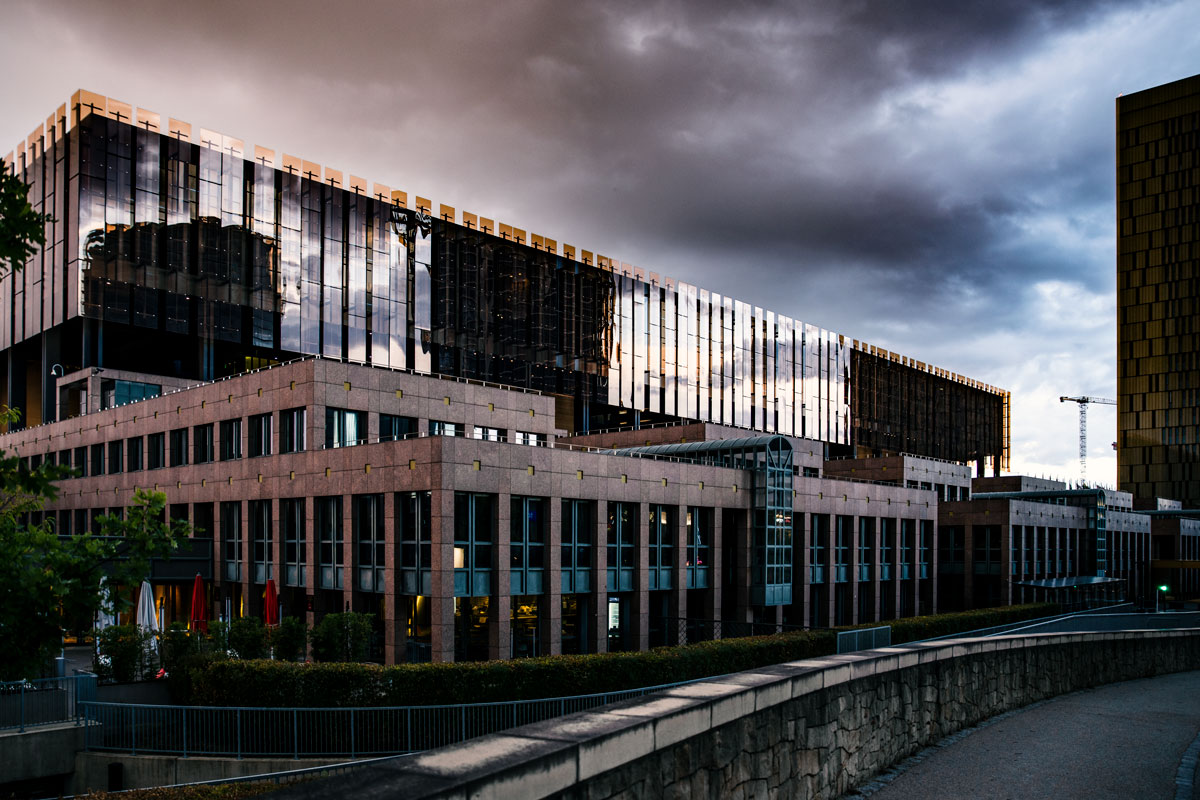
In a rainy August week in the coronavirus summer of 2020, we drive to Luxembourg. The wind is blowing and the clouds hang low. It’s an uncomfortable day, with a cool drizzle falling again and again. After breakfast in the city center, we take a walk along the Alzette. A small river that originates in France and flows into the Sûre in Luxembourg, cutting a deep valley through the small country. It also shapes the capital city with its Grund and Pfaffenthal districts.
We pass bridges, churches and the casemates. When a rain shower falls, we take refuge in the National Museum. Concrete walls, straight lines, shadows and light – a photographer’s dream. When it clears up, we head outside. Past the Porte du Grünewald, the path leads us up to the Kirchberg.
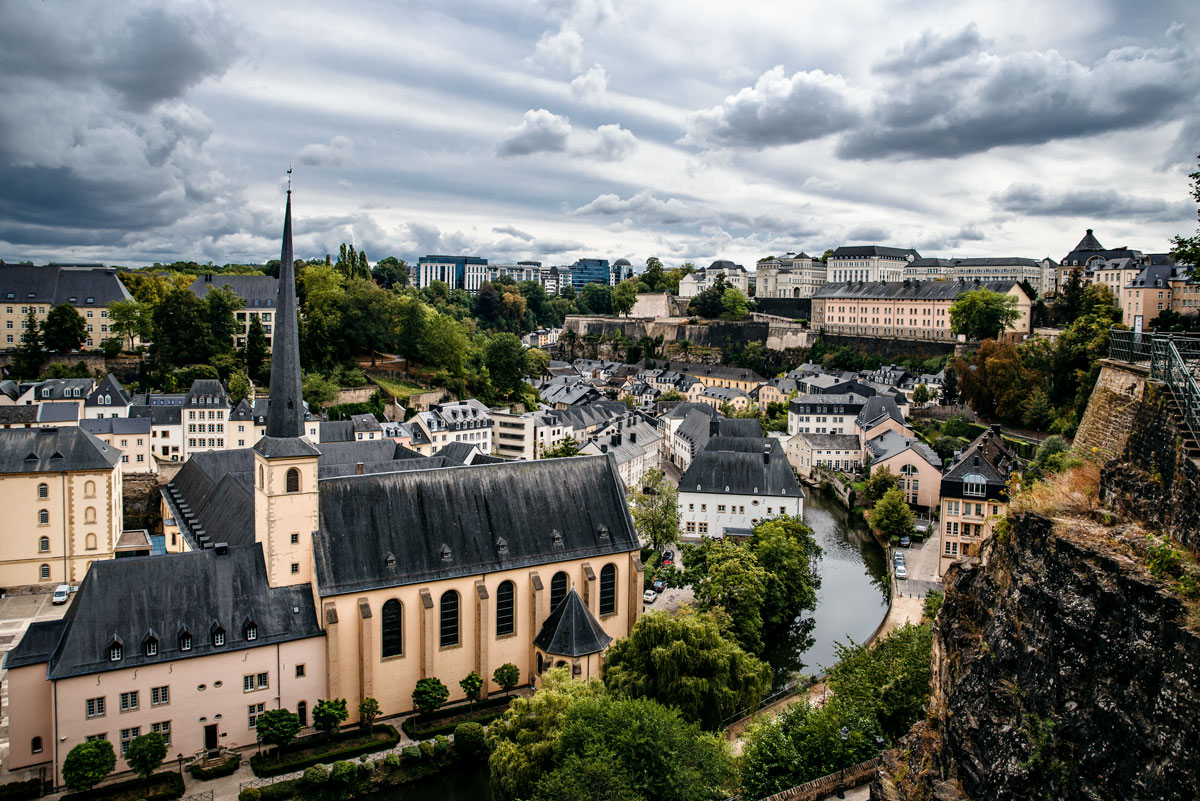
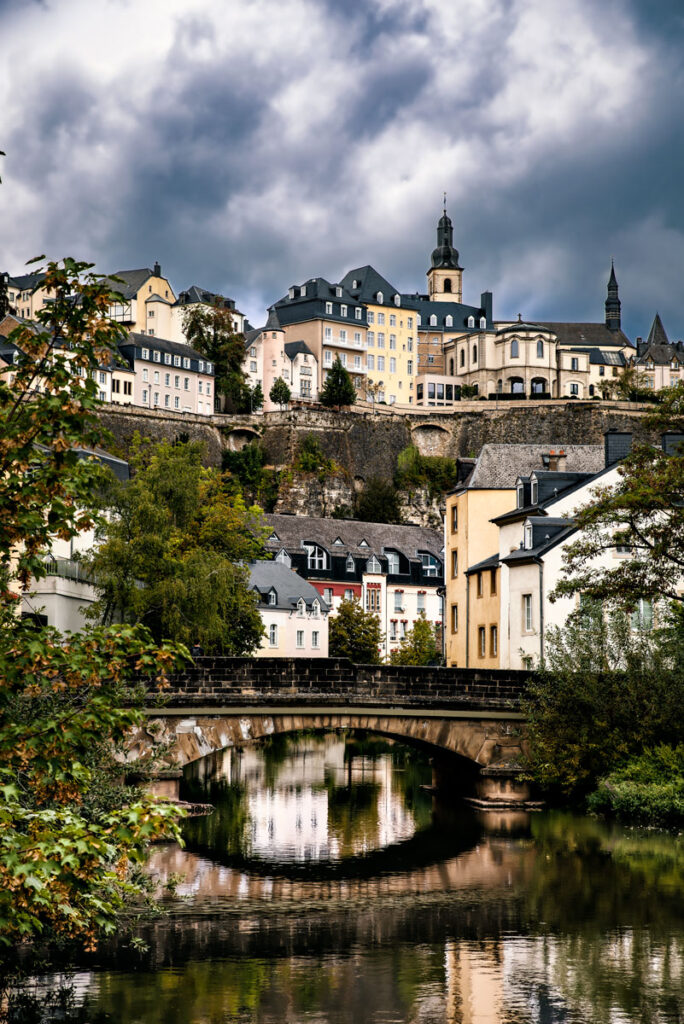
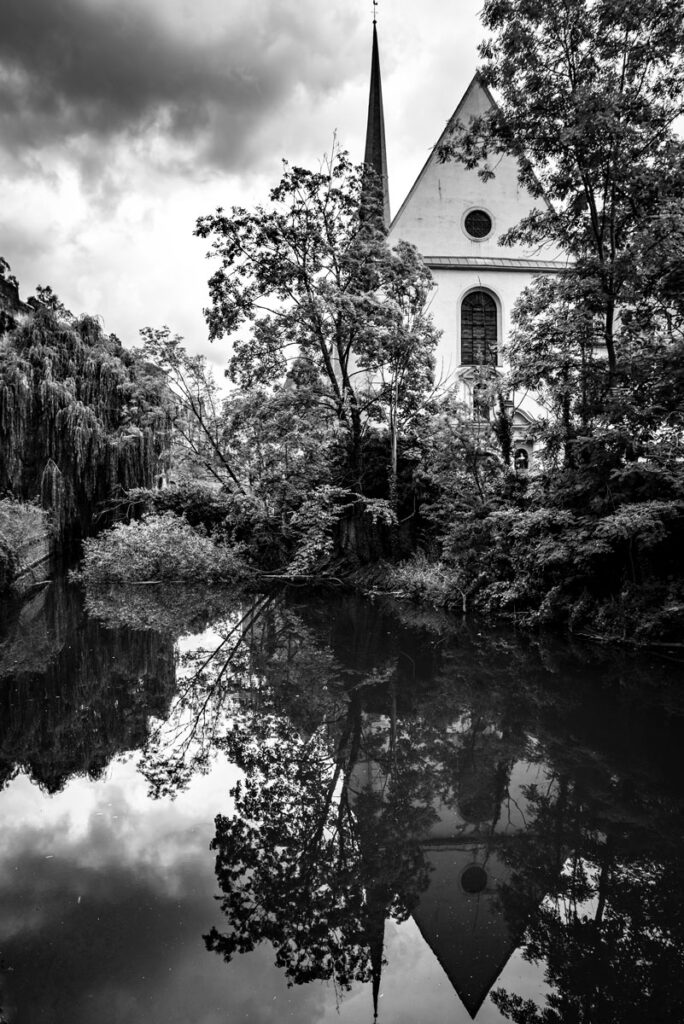
On Kirchberg, Luxembourg presents its modern side: new glass and steel-concrete buildings, cubist forms, asphalt and street lamps. The Philharmony as a stranded spaceship, office towers as sacred obelisks of capitalist value creation. A dramatic sky is reflected in the huge window fronts. Clouds bring a heavy downpour, after which the evening turns purple-red. Traffic streams out of the city, black limousines and sporty two-seaters.
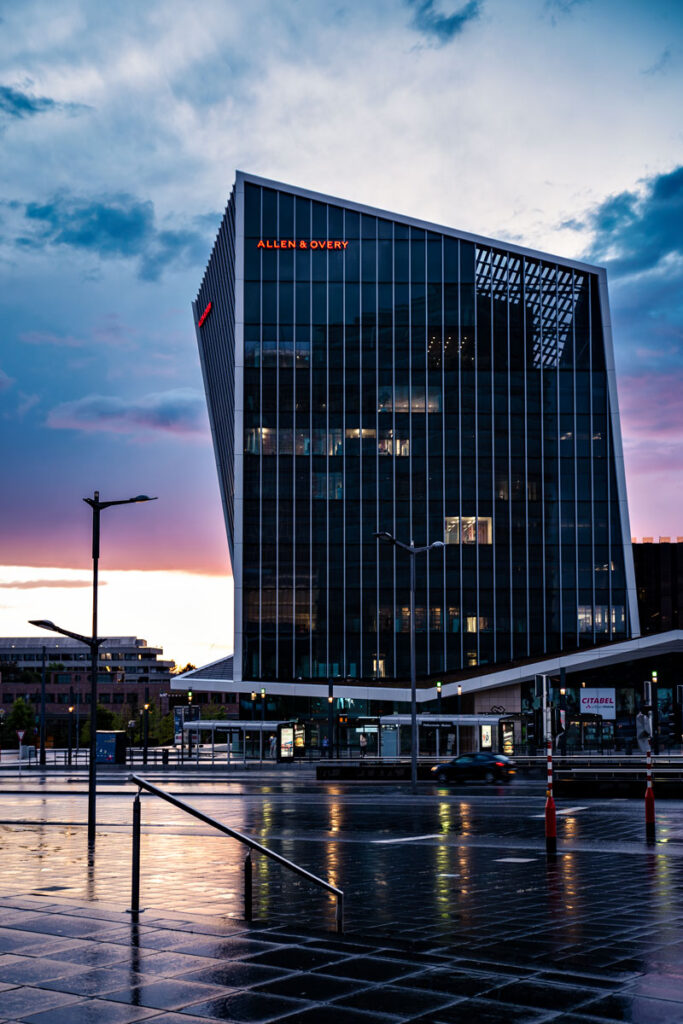
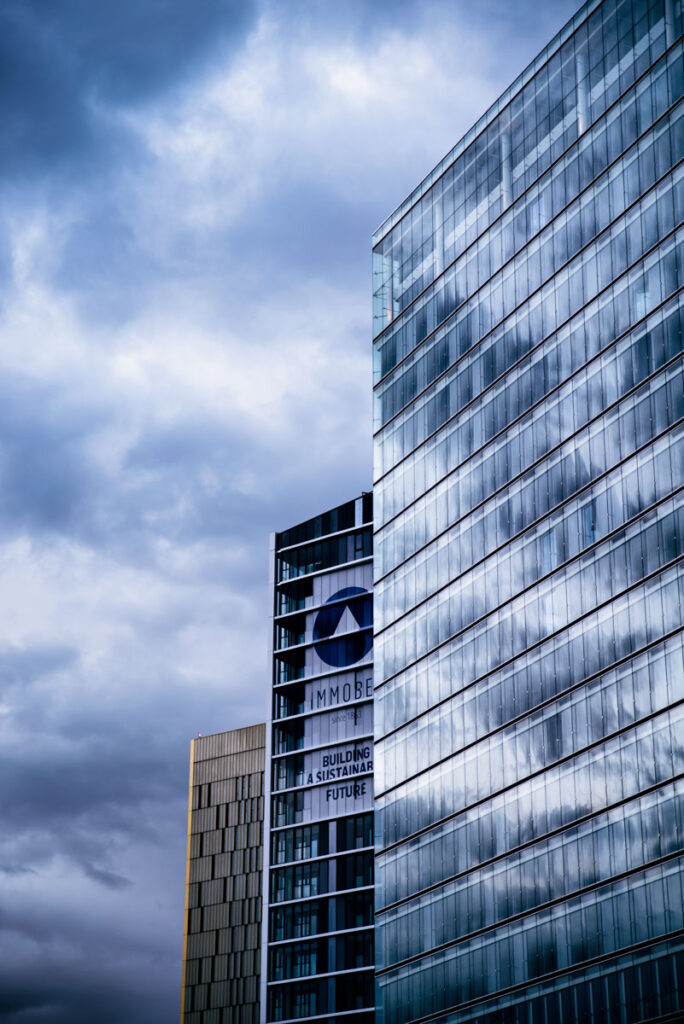
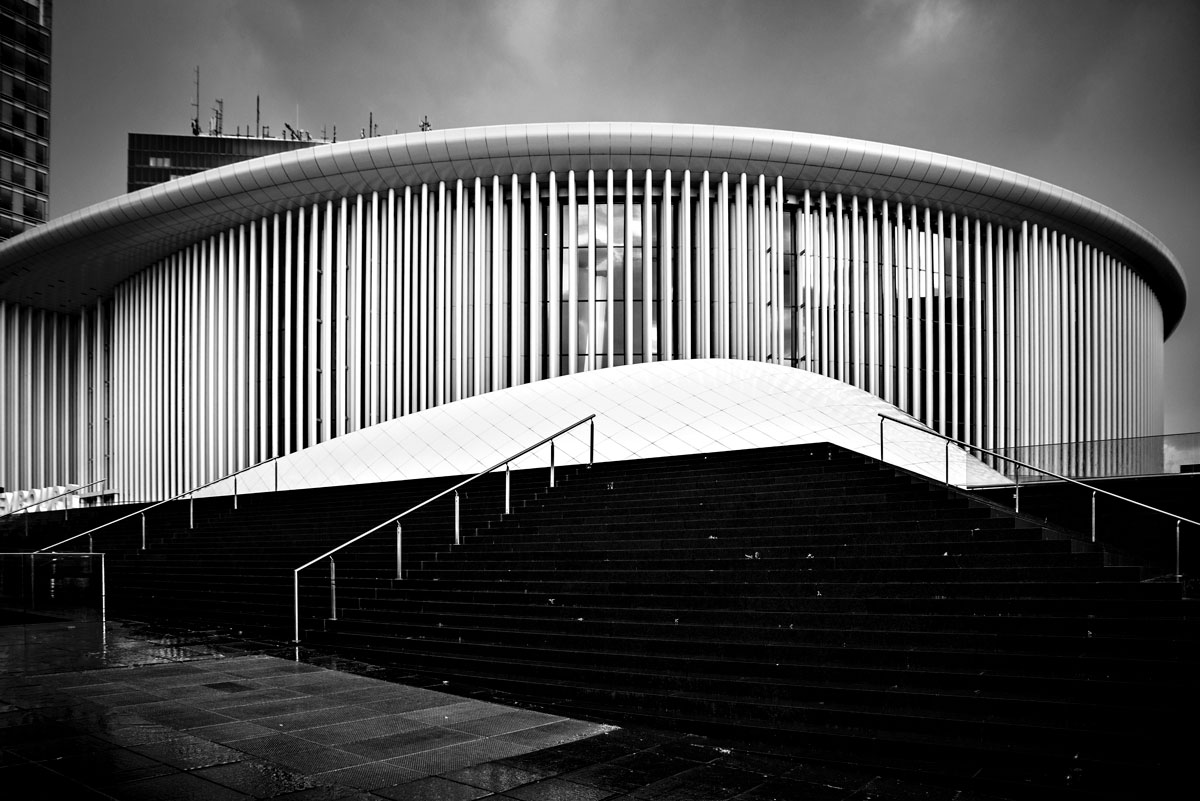
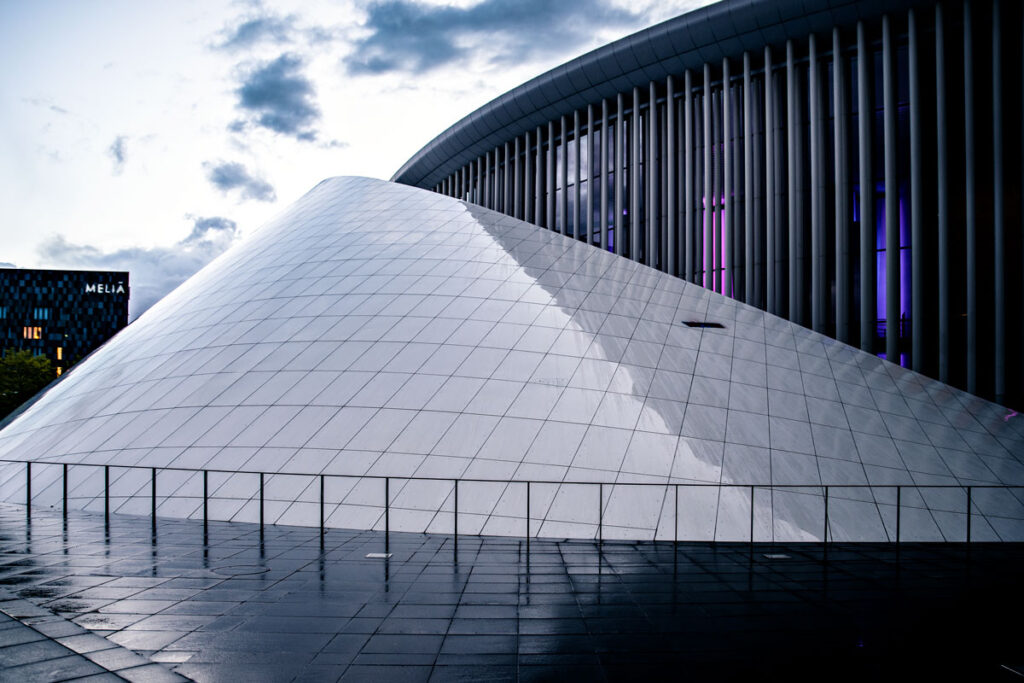
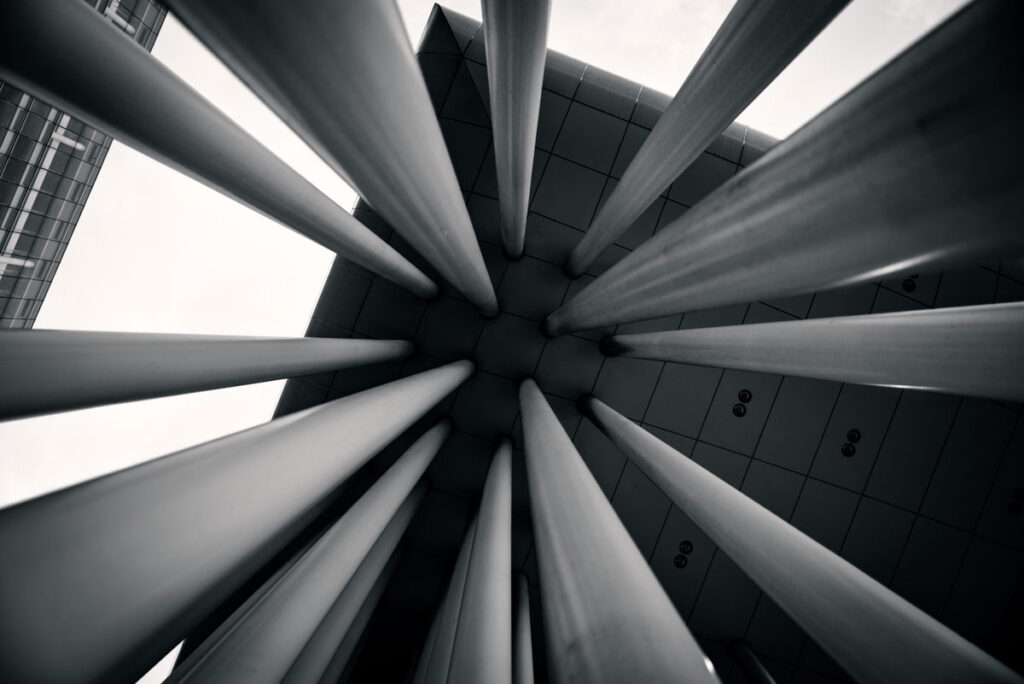
In addition to its capital, Luxembourg also has a number of small towns. There is also some forest and short hiking trails. Before we leave the dwarf state, we make a short detour to the Schiessentümpel waterfall. A trail leads us from the parking lot to a picturesque pond, behind which an old arched bridge spans the stream. A waterfall may be a word too powerful for the three stone steps that the water flows down here. How else would a waterfall present itself in a country as small as Luxembourg?
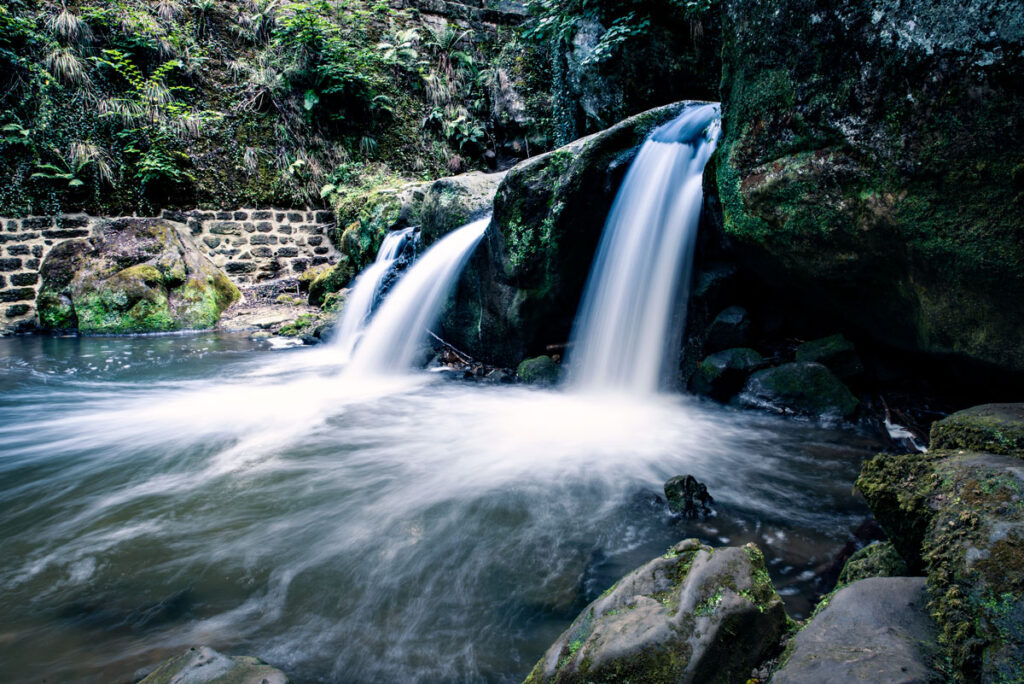
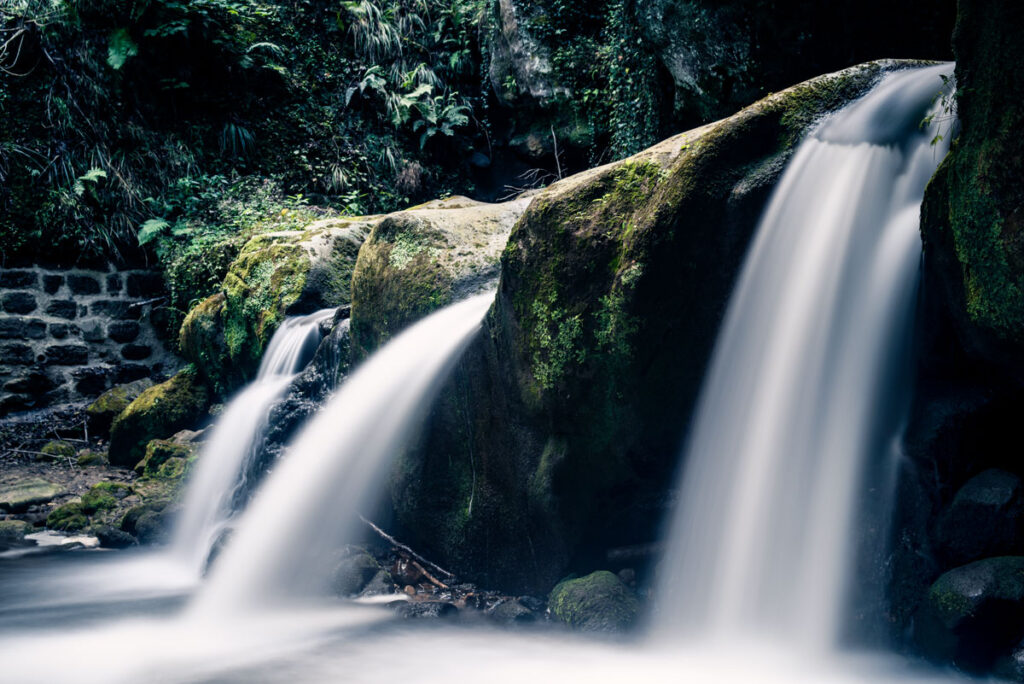
Hearts are often loud beating and pulsating places that keep the whole body alive. New York as the heart of the USA, Alexanderplatz as the heart of Berlin, Shibuya Crossing as the heart of Tokyo. But the heart of Europe beats quietly. Luxembourg is an unagitated, sometimes idyllic place. It has nothing of the wide world, no glamour, no jetsetter life. One could maliciously describe Luxembourg as the boring, snobbish center of a union of authorities drowning in bureaucracy. Or one could recognize in Luxembourg a small state that has grown up over a long period of time, a focal point of culture and tradition, rich in language and dialectics. The quintessence of a Europe that has no need to seduce with speed, megalomania and hedonism.
Info about our trip
Luxembourg is a dwarf country that can easily be visited in one to three days. A full day is enough for the capital itself, but if you are interested in all the museums and a trip into the surrounding countryside, plan an extra day or two. Otherwise, Luxembourg is very easy and convenient to visit: Like everywhere else in the EU, you have internet and pay with the euro. You can also speak German everywhere.
Who should visit Luxembourg? Certainly not for adventure, nature and hiking enthusiasts, and foodies are unlikely to enjoy themselves here (food is not cheap). A trip to this small country is more like a city trip, with the cultural focus predominating. It is most likely that most tourists to Luxembourg are either day trippers from nearby or passing through on their way to France or Belgium. That’s what we did and drove via Trier and Luxembourg on our way to Alsace.
Luxembourg is an expensive country to visit, on average the price level there is around 30-50% higher than in Germany. That’s why we kept our stay short and limited it to free activities.
Luxembourg cuisine is – how could it be otherwise – a mixture of French, German and Belgian influences. Traditional dishes are often hearty and down-to-earth. Popular dishes include Judd mat Gaardebounen, cured pork neck with broad beans, and Bouneschlupp, a green bean soup. Gromperekichelcher, crispy potato pancakes, are also a classic. Luxembourg also has a strong wine culture, especially on the Moselle, where excellent white wines such as Riesling are produced. French patisseries and Belgian chocolates enrich the desserts, and there are numerous international restaurants in the cities.
As good as this may sound, a visit to a restaurant is by no means cheap. We ate sandwiches from a bakery for breakfast and lunch, and in the evening we ate at L’Osteria Luxembourg on Kirchberg. The pizzas there weren’t cheap, but they were big and tasted okay.
As we were traveling quite spontaneously at that time, there was virtually no choice of central hotels with parking and reasonable prices. We stayed at the Mandarina Hotel Luxembourg Strassen. The price was acceptable and the rooms were clean. However, the hotel itself was not exceptional, more of the impersonal, functional, okay kind. So quite suitable for a short stay. You also have a free parking lot in front of the door and the connection to the city is given by bus (could be better though). However, with a little advance booking you will certainly find better and more central accommodation.
Luxembourg is considered one of the safest countries in Europe. The crime rate is very low and acts of violence are rare. The police are present and reliable and emergency services are easily accessible. Luxembourg also has a stable political situation and excellent medical care. You can feel safe here, both in the cities and in rural areas.
Luxembourg is a child-friendly destination with many offers for families. The people are warm and helpful, and many restaurants and accommodations offer special options for children. There are numerous parks and green spaces in Luxembourg City that are ideal for family outings. Particularly popular is the Parc Merveilleux in Bettembourg, a leisure park with animals, fairytale worlds and playgrounds. Museums and historical sites also often offer guided tours suitable for children. Thanks to the manageable size of the country, many sights are easily accessible, which makes traveling with children relaxed and enjoyable. Excursions into nature are also easy thanks to short car journeys and easy hiking trails.
The easiest way to travel to Luxembourg is by car. However, you can also reach Luxembourg City from Koblenz in 2.5 hours by train. You don’t need a car in the city itself or anywhere else in the country – all public transport has been free for EVERYONE since 2020. So leave your combustion engine parked and travel Luxembourg by public transport!
- Andrea Lammert provides an easy, beautifully photographed introduction to the Benelux countries in general with KUNTH Benelux. Das Buch: Highlights einer faszinierenden Region
- Michel Pauly provides an outline of the Geschichte Luxemburgs in just over one hundred pages
